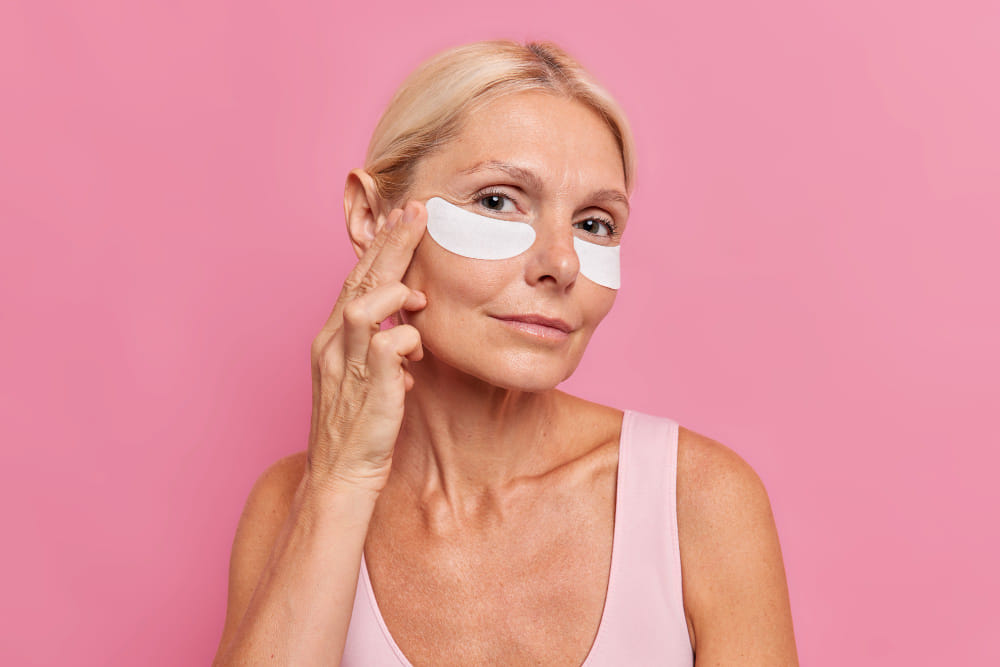Dark facial spots can be one persistent challenge, but with an understanding of the formation and how it needs to be handled, treatment may be much less daunting and can instead be under control. We shall start by giving a basic guide on how to get rid of dark spots using science, practical advice, and a dab of optimism.

Dark Spots: What are they?
Dark spots are caused when more melanin than usual builds up in one area of the skin. These spots are activated by many factors, which include exposure to the sun, hormonal changes, scars from acne, and even some particular medicines. For this, the root has to be recognized so that effective treatment can be done.
1. Sun Protection: The First Line of Defense
One of the main causes of dark spots is UV radiation from the sun. Sun exposure triggers melanin production, which darkens existing spots and even causes new ones. Thus, this calls for protection of the skin from the sun.
- Daily use: Use a broad-spectrum sunscreen with an SPF of at least 30 in your daily routine. Apply every morning, even if you are not heading outdoors, and every two hours when staying in the sun.
- Seek Shade: Stay in the shade whenever possible, especially during peak sun hours (10 AM to 4 PM). Wearing hats, sunglasses, and protective clothes can further protect your skin from damaging UV rays.
2. Topical Treatments: The Science of Lightening
There are many topical treatments that can aid in decreasing dark spots through an action on the processes involved in melanin synthesis and cell turnover. Following are some of the effective ingredients you should be looking for:
- Vitamin C: It is an antioxidant powerhouse that brightens the skin and limits melanin production. Serums can contain any one of the stabilized forms of vitamin C, such as ascorbic acid and sodium ascorbyl phosphate.
- Retinoids: This increases cell turnover to encourage the removal of the pigmented cell. Stronger, prescription-strength tretinoin is available, like retinol, to fire up collagen production and generally improve the texture and tone of the skin.
- Niacinamide: Most commonly known as Vitamin B3, Niacinamide helps in reducing the appearance of dark spots by reducing melanin production and improving skin texture. Most types of skin are well-tolerant to it.
- Alpha Hydroxy Acids (AHAs): AHAs, like glycolic acid, exfoliate the superficial layer of the skin, helping in the removal of dead cells and lightening dark spots. Incorporate AHA-based exfoliants into your skincare treatment, but don’t use them excessively to avoid making your skin more sensitive.
3. Professional Treatments: Advanced Solutions
If the dark spots are stubborn or too prominent, seek a dermatologist’s advice on the following professional treatments:
- Chemical Peels: A dermatologist applies a solution containing a chemical onto the skin to exfoliate the top layers of skin and thereby improve skin texture and reduce pigmentation.
- Laser Therapy: Laser treatment uses concentrated light to target the melanin deposits in the skin. Varied depths and natures of pigmentation would require the use of various types of lasers. Laser treatment may be very effective, but it could take many sessions and time to recover.
- Microneedling: This is a technique in which fine needles prick the skin, causing micro-trauma. This turns on collagen production and increases skin permeability for better absorption of topical treatments. This may be used to improve skin tone and gradually fade dark spots.
- Cryotherapy: This is one technique in which liquid nitrogen is applied to freeze the dark spots and kill the pigment cells. It is generally done for a few isolated spots and may take several sessions for good results.
4. Natural Remedies: Gentle and Holistic Approaches
Those who prefer natural treatments may find the following home remedies helpful, though their efficiency may vary:
- Aloe Vera: Recognized for its soothing and healing properties, aloe vera gel has the ability to lighten the dark spots gradually. A piece of fresh aloe vera gel should be applied to the affected areas for about 30 minutes before being washed off.
- Green Tea Extract: Green tea extract is packed full of antioxidants that help reduce pigmentation. You can apply this as a toner or mix it with other soothing ingredients, such as honey, for a face mask.
- Apple Cider Vinegar: Apple cider vinegar contains acetic acid which is efficient in exfoliating as well as lightening dark spots. Dilute it in water and apply it to the spots with the help of a cotton ball. Never apply vinegar in its concentrated form, as it can further irritate sensitive skin.
5. Lifestyle and Dietary Changes: A Holistic Approach
A healthy lifestyle, together with proper dieting, can keep the skin healthy and can avoid the development of dark spots. Here are some ways to live a healthy life:
- Balanced Diet: Include antioxidant-rich, vitamin, and mineral-rich foods. Fruits like berries and oranges, and vegetables such as carrots and spinach, are all very useful in helping fight against oxidative stress and will promote good skin health.
- Hydration: Water keeps your skin hydrated and helps detoxify, giving your skin a clear look.
- Avoid Smoking and Excessive Alcohol Intake: Smoking and intake of excessive alcohol may lead to ill effects on skin health and worsen the disorders of pigmentation.
- Regular Exercise: Exercises are very effective for blood flow, and through it, all the vital nutrients reach your skin to make it much healthier.
Conclusion
Getting rid of such dark spots on the face requires a multi-model approach, including techniques like a facelift or laser treatment. Knowing the root of the causes and sticking with the right strategies will help you get a great improvement in your skin, restoring an even and radiant complexion. Approach every step that you take optimistically, knowing this is getting you closer to healthier, clearer, brighter skin.
